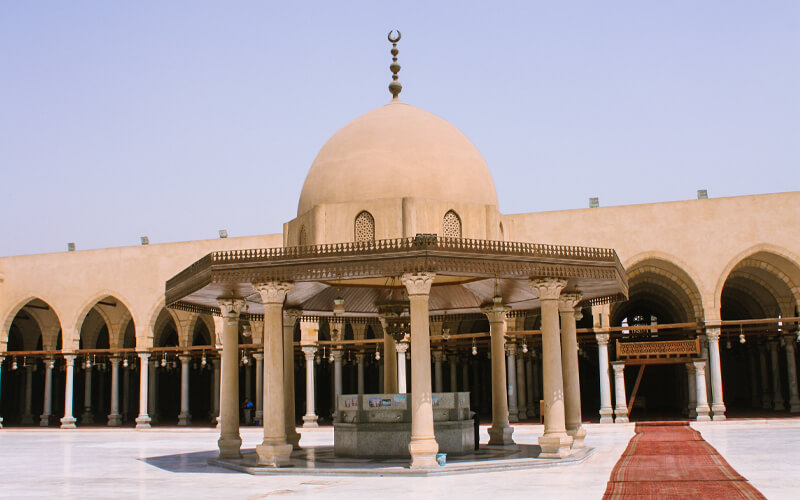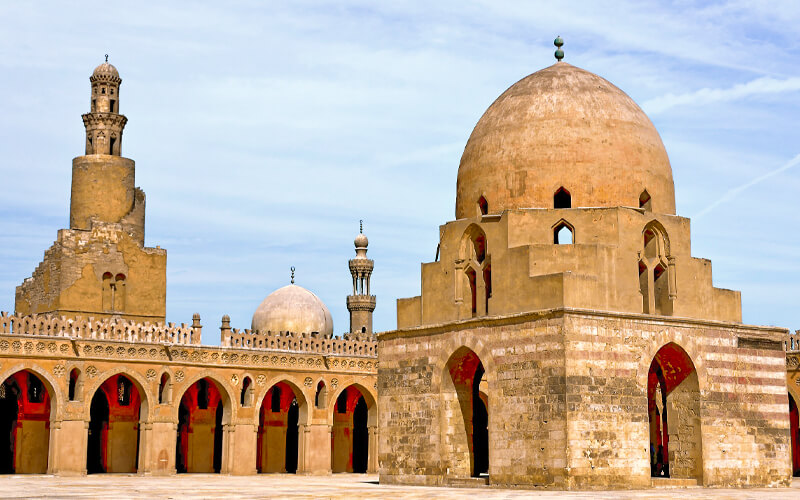Mosque of Amr Ibn Al Aas
Mosque of Amr Ibn Al Aas
Who was Amr Ibn Al-Aas, and what was his story?
Amr Ibn Al-Aas is considered to be one of the most significant characters in Egyptian history since he was the one who brought Islam to the country. He established the city of Fustat, which was located immediately north of the Roman fortifications of Babylon. The location of this city is still marked by the Mosque of Amr Ibn Al-Aas, which was built in the 11th century. However, even though the edifice has been reconstructed multiple times and no part of the original construction survives today, it remains the location of the oldest mosque in Egypt, if not the whole African continent.
With the arrival of General Amr Ibn Al-Aas of the Rashidun Islamic Caliphate in 640 AD, Islam spread over Egypt and the whole continent of Africa. As recently as 632 AD, the religion had only been around for a handful of decades and was rapidly growing in popularity thanks to the influence of the Rashidun Caliphate, which had been established after the death of the Prophet Mohammed. At the time, Coptic Christianity had just recently eclipsed the religion of Ancient Egypt in terms of popularity, making it the main religion in the country.
General Amr Ibn Al-Aas and his army marched towards the region that is now known as Cairo to assault the fort of Babylon, which was located along the banks of the Nile at the time. The Muslim army established up camp north of the fort and the village surrounding it and started laying siege to the fort and settlement.
Interesting facts about the Amr Ibn Al-Aas Mosque include the following:
Legend has it that a dove nested on the ceiling of the general’s tent when they were in a camp outside of the city while they were away from the city. Amr requested that his tent be left where it stood after defeating Babylon, believing the dove’s nest to be an indication of God’s will. After conquering Babylon, the army prepared to march on Alexandria, which served as Egypt’s capital throughout the Greco-Roman era.
The Muslim army took Alexandria, thereby gaining dominance over Egypt. However, news from Caliph Umar in Medina informed them that they should relocate their capital to a location closer to Medina. After considering the omen of the dove, Amr Ibn Al-Aas constructed a mosque in the place where his tent had formerly stood, which later became the focal point of the new Muslim capital of Egypt, Fustat. This mosque, which was built in 642 AD and named for the commander, was the world’s first mosque to be built on the African continent.
The building of the Amr Ibn Al-Aas Mosque began in the following year:
The mosque of Amr Ibn Al-Aas was initially made from palm trunks, mud brick, and palm leaves for a roof, and as a result, no remnants of the original building exist, and the mosque has been renovated several times since its construction in the seventh century. In 827, the first arcades of columns were built, giving the structure a fixed shape that has subsequently been extended and improved. Only a tiny number of these original architraves exist today, and they may be seen along the mosque’s southern wall, where they were first installed. The most recent reconstruction of the structure took place in 1875.
Tourists continue to flock to the mosque, even though much of its original building has been rebuilt, because of the mosque’s historical importance as the location of the earliest Muslim settlement in Egypt and the first mosque in Africa. In the heart of Cairo’s historic district, Fustat is within walking distance of the Mar Gargis metro station and Coptic Cairo.
If you want to spend a fantastic vacation check out our amazing Egypt Vacation packages or Cairo Excursions to find the best way to travel to Egypt for you.



